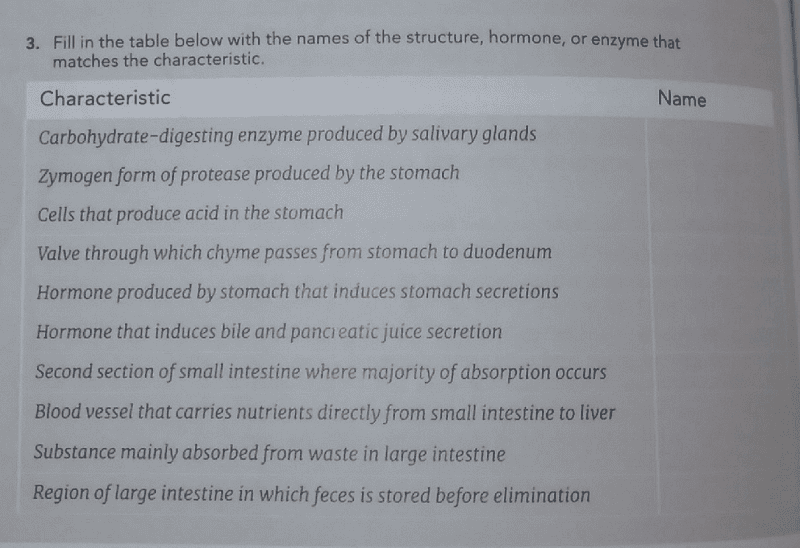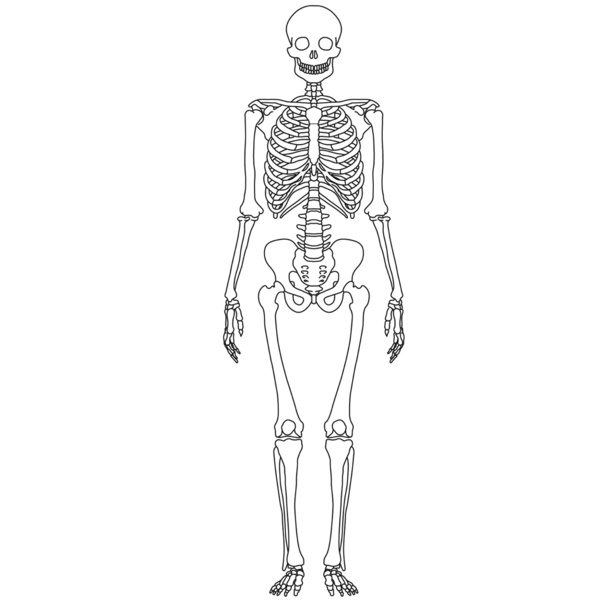Instructions for Side by Side Printing
- Print the notecards
- Fold each page in half along the solid vertical line
- Cut out the notecards by cutting along each horizontal dotted line
- Optional: Glue, tape or staple the ends of each notecard together
ATI TEAS 6th Edition- Science 1
front 1 Which of the following pairs correctly matches a cellular organelle with its function? A. Golgi apparatus- protein synthesis | back 1 C. |
front 2 Which of the following describes an anatomical relationship between two structures in the human body? A. The mouth is anterior to the nose. | back 2 B. |
front 3 Which of these organs is directly involved in synthesis of red blood cells in an adult? A. Liver | back 3 C. |
front 4 At the end of a sprint, a runner breathes hard because the medulla oblongata senses which of the following? A. Low oxygen levels in the blood | back 4 D. |
front 5 Which of the following situations would result in increased oxygen diffusion from alveoli into blood? A. Increase in perfusion and decrease in ventilation | back 5 D. |
front 6 Match the following respiratory system effects to their most probable cause. A. Walking pneumonia 1. Coronavirus | back 6 A. 5 B. 3 C. 1 D. 2 E. 4 |
front 7 Which of the following describes a property of cardiac cells? A. Generation of electrical impulses | back 7 A. |
front 8 Which of the following blood component levels would be expected to increase following vaccination? A. Red blood cells | back 8 B. |
front 9 Which of the following statements regarding the circulatory system is correct? A. The sinoatrial node is present in the top section of the right
atrium. | back 9 A. |
front 10 Which of the following physiological responses follows eating a large meal? A. Pulse rate increases. | back 10 B. |
front 11 Which of the following describes why liver failure is a critical health emergency? A. The liver produces the majority of digestive enzymes. | back 11 D. |
front 12  | back 12 Salivary amylase, Pepsinogen, Parietal cells, Pyloric sphincter, Gastrin, Cholecystokinin, Jejunum, Hepatic portal vein, Water, Rectum |
front 13 Which of the following actions is controlled by the autonomic nervous system? A. Walking B. Chewing C. Heart Beating D. Talking | back 13 C. |
front 14 Which of the following processes best describes how a signal travels across a nerve synapse? A. Electrical B. Kinetic C. Potential D. Chemical | back 14 D. |
front 15 What is the primary component of muscles? A. Fat B. Protein C. Carbohydrates D. Nucleic Acid | back 15 B. |
front 16 Which of the following organs produces sperm? A. Penis B. Testes C. Prostate D. Vas deferens | back 16 B. |
front 17 Which of the following connects the ovaries and uterus? A. Vagina B. Cervix C. Vas deferens D. Fallopian tubes | back 17 D. |
front 18 In which of the following organs is estrogen primarily made? A. Testicles B. Uterus C. Scrotum D. Ovaries | back 18 D. |
front 19 Which of the following is the outermost layer of the skin? A. Dermis B. Sudoriferous C. Sebaceous D. Epidermis | back 19 D. |
front 20 Which of the following is not excreted through the integumentary system? A. Alcohol B. Minerals C. Blood D. Urea | back 20 C. |
front 21 Which of the following mechanisms is used when the body becomes too cold? A. Blood vessel dilation B. Sweating C. Blood vessel constriction D. Vitamin D production | back 21 C. |
front 22 Which of the following describes the signal employed by the endocrine system? A. Electrical B. Chemical C. Physical D. Audio-visual | back 22 B. |
front 23 Which of the following is not a gland in the endocrine system? A. Pineal B. Hypothalamus C. Lung D. Ovary | back 23 C. |
front 24 Describe how a gland sends a message: | back 24 The gland synthesizes the hormone, which is released into the blood. The hormone then attaches to a receptor in or on the target gland or tissue to initiate a response. |
front 25 Which of the following organs function as part of the genitourinary system to maintain blood pressure? A. Heart B. Kidney C. Urinary bladder D. Ureter | back 25 B. |
front 26 Which of the following parts of the genitourinary system also transports sperm? A. Kidney B. Ureter C. Urinary Bladder D. Urethra | back 26 D. |
front 27 Which of the following organs filters blood and creates urine? A. Heart B. Urinary bladder C. Lungs D. Kidney | back 27 D. |
front 28 Which of the following are innate immune system cells that attack host cells harboring an intracellular pathogen? A. Natural killer cells B. Cytotoxic T-cells C. Plasma Cells D. Dendritic cells | back 28 A. |
front 29 Which of the following is a nonspecific immune response? A. Antibody secretion by plasma cells B. Cytokine secretion by T-cells C. Antigen recognition by B-cells D. Cytokine-mediated inflammation | back 29 D. |
front 30 Which terms are innate or adaptive immune system components. A. Leukocytes, Monocytes, Dendric cells, NK cells, Complement, Inflammation, Phagocytosis, Toll-like receptors, Interferons, PAMPs, Antimicrobial proteins, Physical barriers, Chemical secretions, Lysoyme B. Lymphocytes, B-cells, Cytotoxic T-cells, Plasma cells, Memory cells, Antibodies, Helper T-Cells | back 30 A. Innate:Leukocytes, Monocytes, Dendric cells, NK cells, Complement, Inflammation, Phagocytosis, Toll-like receptors, Interferons, PAMPs, Antimicrobial proteins, Physical barriers, Chemical secretions, Lysoyme B. Adaptive Immune System: Lymphocytes, B-cells, Cytotoxic T-cells, Plasma cells, Memory cells, Antibodies, Helper T-Cells |
front 31 Which of the following cells is involved in mineral resorption from bone? A. Osteoclasts B. Osteoblasts C. Canaliculi D. Osteon | back 31 A. |
front 32 Which of the following bones articulate at a synovial joint? A. Skull bones B. Radius and ulna C. Bones of the pubis D. Humerus and scapula | back 32 D. |
front 33 Label the bones of a skeleton. | back 33  |